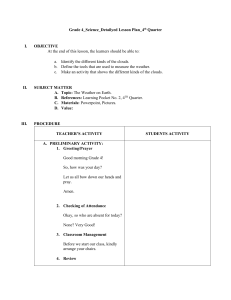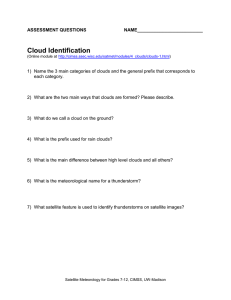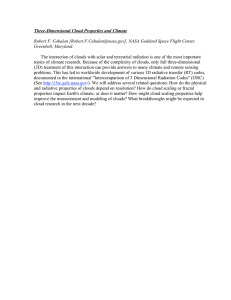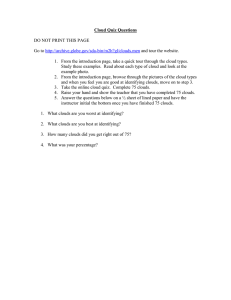Meteorology CDA Study Guide
advertisement
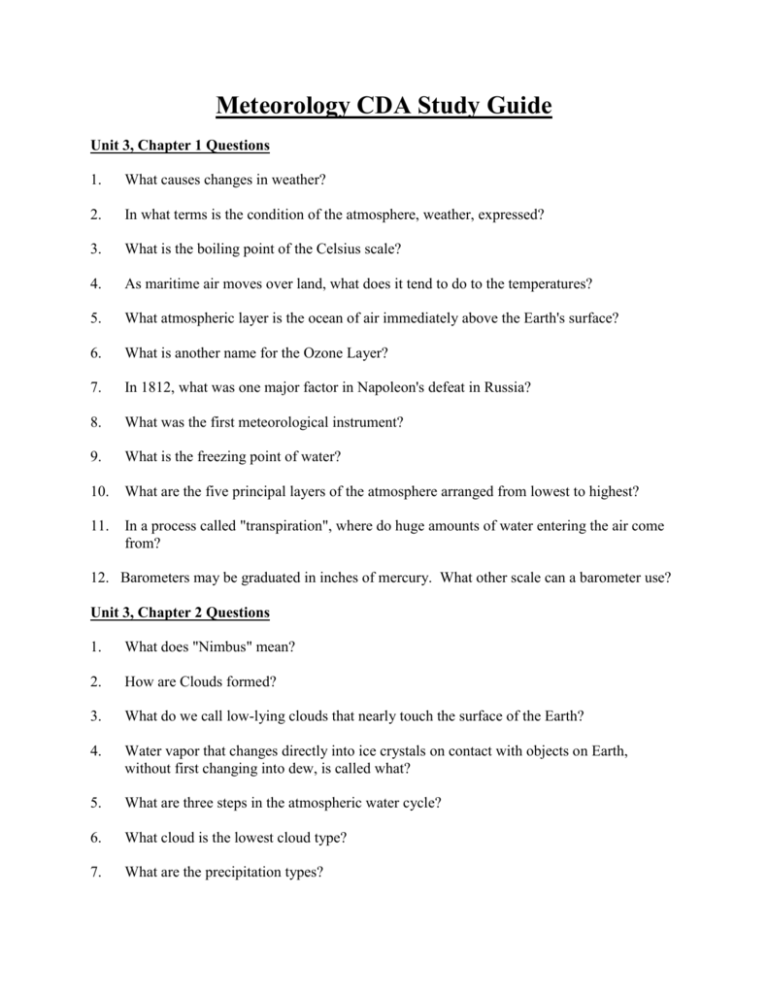
Meteorology CDA Study Guide Unit 3, Chapter 1 Questions 1. What causes changes in weather? 2. In what terms is the condition of the atmosphere, weather, expressed? 3. What is the boiling point of the Celsius scale? 4. As maritime air moves over land, what does it tend to do to the temperatures? 5. What atmospheric layer is the ocean of air immediately above the Earth's surface? 6. What is another name for the Ozone Layer? 7. In 1812, what was one major factor in Napoleon's defeat in Russia? 8. What was the first meteorological instrument? 9. What is the freezing point of water? 10. What are the five principal layers of the atmosphere arranged from lowest to highest? 11. In a process called "transpiration", where do huge amounts of water entering the air come from? 12. Barometers may be graduated in inches of mercury. What other scale can a barometer use? Unit 3, Chapter 2 Questions 1. What does "Nimbus" mean? 2. How are Clouds formed? 3. What do we call low-lying clouds that nearly touch the surface of the Earth? 4. Water vapor that changes directly into ice crystals on contact with objects on Earth, without first changing into dew, is called what? 5. What are three steps in the atmospheric water cycle? 6. What cloud is the lowest cloud type? 7. What are the precipitation types? 8. What occurs when rain falls from warm air through a layer of freezing air? 9. Why do clouds form above islands? 10. Fog formed by cold air moving over warm water is called what? 11. What are the three basic cloud types? 12. With what type of clouds are Severe thunderstorms and tornadoes associated? Unit 3, Chapter 3 Questions 1. Why does the wind blow? 2. At what angle to the sun is the earth inclined? 3. What are the bands of easterly winds located at the surface and north and south of the Doldrums, popular with sailing vessels called? 4. What is the name of the infamous valley wind system that is always a concern for the 6th Fleet in the western Mediterranean Sea? 5. Where do monsoon winds characteristically occur? 6. What is the name of the equipment used to measure wind speed and direction? 7. Three strong winter high-pressure circulations are located over Greenland, North America and what other area? 8. When is the Earth closest to the Sun? 9. Under international agreement, wind speed is always given in what units? 10. A scale in which the face of the wind is indicated by numbers from 1 to 12 is named what? 11. What is the best term for a tornado that forms over water? Unit 3, Chapter 4 Questions 1. What are tropical cyclones that occur off the west coast of Australia called? 2. What is the source of lightning in thunderhead clouds? 3. Tropical cyclones occurring east of the International Date Line in the Pacific or along the US east coast and the Gulf of Mexico are known as what? 4. Boundaries of air masses of different temperatures that collide are called what? 5. A thunderstorm develops in how many stages? 6. What is the most intense and violent of localized storms? 7. What was the name of the strongest hurricane ever recorded in the Western Hemisphere? Unit 3, Chapter 5 Questions 1. What is the normal prediction period for local weather forecasts? 2. What are the newest forecasting tools available to the meteorologist? 3. The National Weather Service is in which government Department? 4. The U.S. Navy rating which specifically concerns itself with interpreting weather conditions for command use is called what? 5. Early weather satellites began in 1960 with the which satellite? 6. Which weather agency provides weather information to newspapers, radio, and television stations? 7. Each of the services must maintain their own weather agency. What is this agency call in the Navy?
